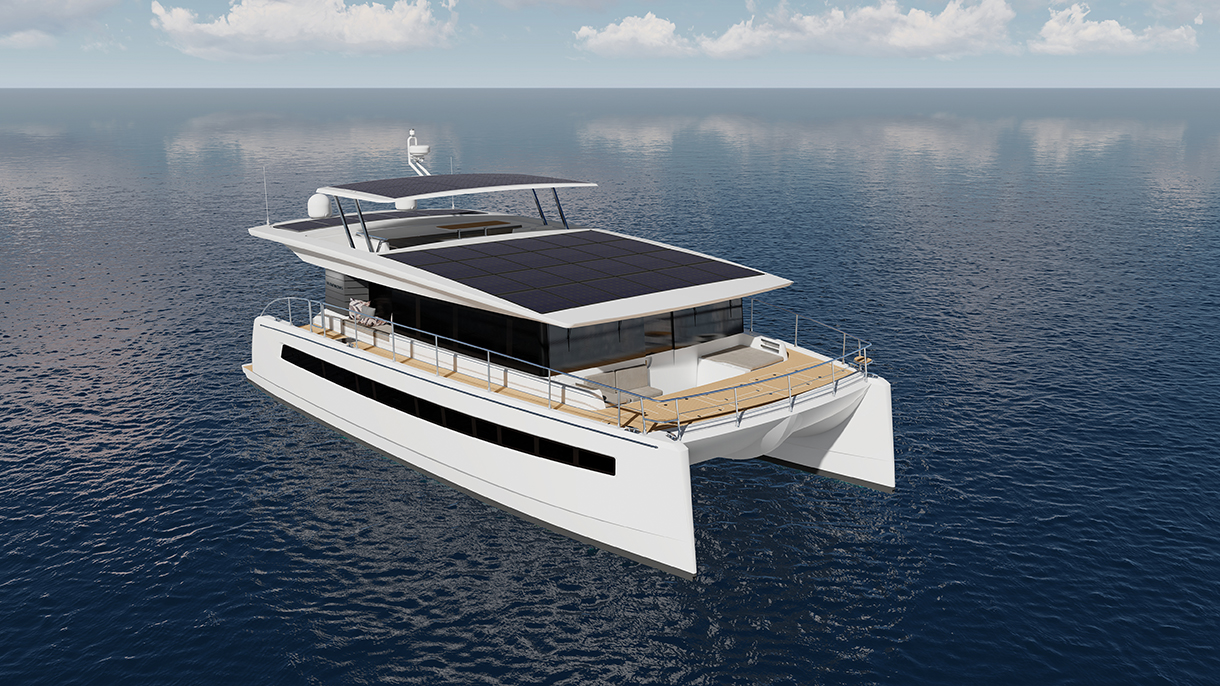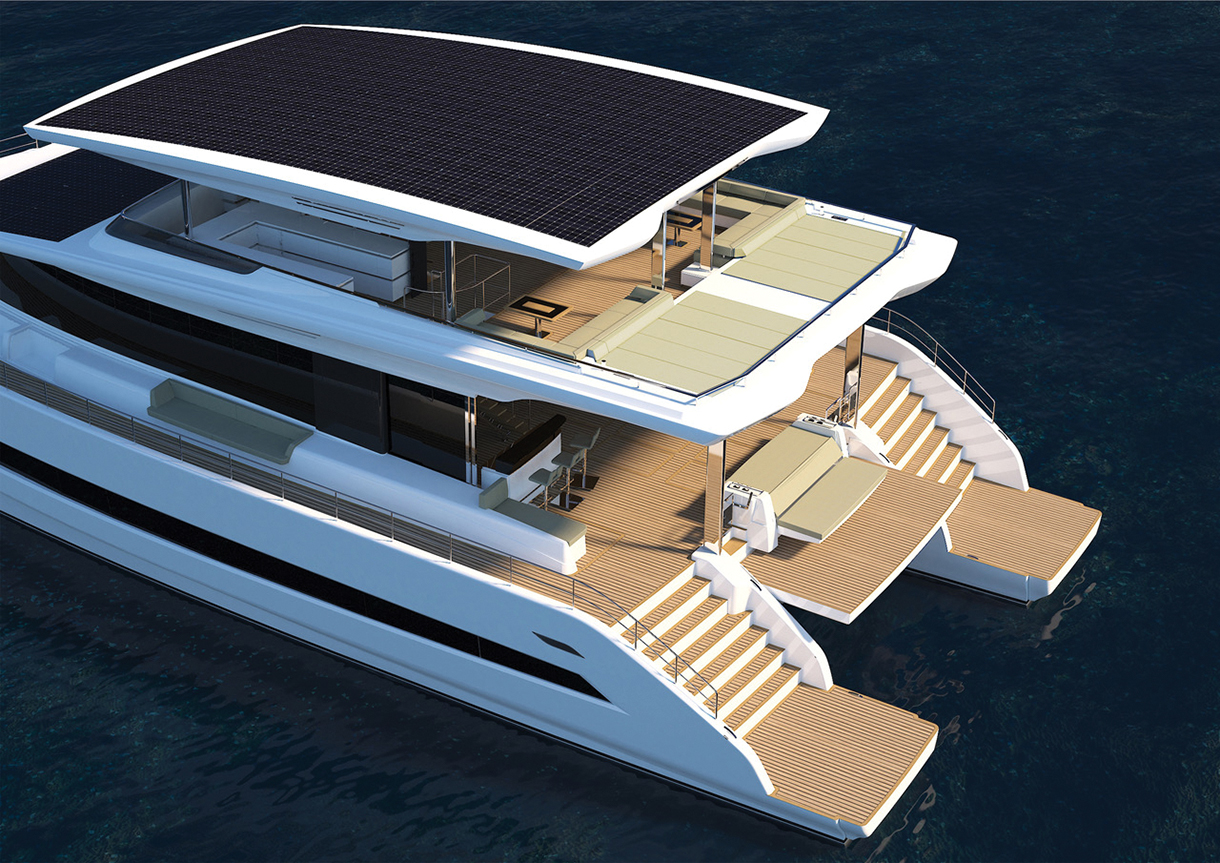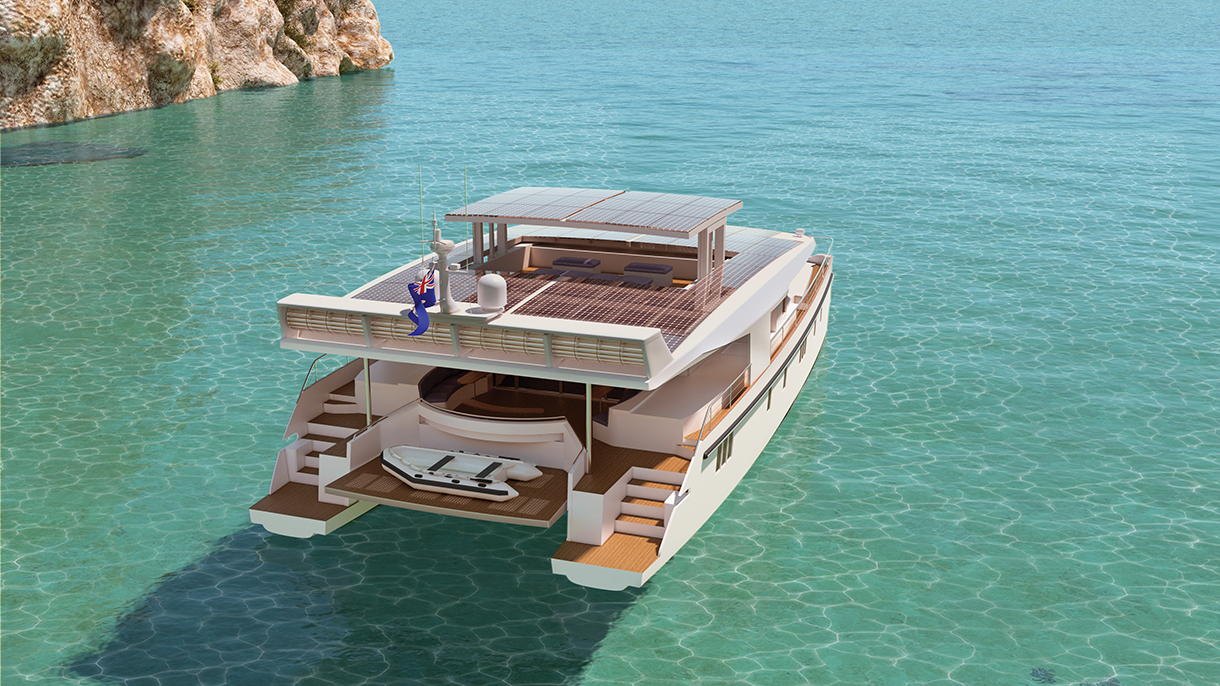
Here Comes the Sun
Two yacht companies that specialize in solar-powered catamarans prove that renewable energy has its perks.
Michael Köhler, the CEO of Silent-Yachts (silent-yachts.com), is nothing short of thorough. In 2006 he began a multiyear experiment testing the efficiency and effectiveness of alternative power sources aboard a catamaran prototype. After sailing the catamaran 15,000 nautical miles, Köhler and his team were ready to build the Solarwave 46, the world’s first ocean-going, exclusively solar-powered yacht. The revolutionary yacht debuted at Boot Düsseldorf in 2009.
Over the years that followed, Silent-Yachts launched the Silent 55 and Silent 64; the latter became the first solar-powered yacht with electric propulsion to cross the Atlantic. The next iteration, Silent 60, is set to launch this spring.

Aside from being eco-friendly, solar-powered catamarans offer their owners additional perks, namely benefits that impact the bottom line. “Because we don’t have to use large diesel engines to move around, our yachts have operating costs that are much lower than those of conventionally powered boats,” says Köhler. “This has a corresponding effect on the maintenance costs, which are almost zero.” Additionally, each Silent-Yacht is delivered with an 8-year warranty for its battery banks, a 25-year warranty on its solar panels, and a lifetime warranty on the electric motors.
According to Köhler, a Silent-Yacht can sail for hours at a cruising speed between 6 and 8 knots (as well as overnight at reduced speeds) without burning any fuel. At anchor, all of the onboard appliances, including the vessel’s air-conditioning system, can be run using only the yacht’s batteries.
“We have a diesel generator on board [the Silent 80], which is not connected to the drive shafts and can be used as a range extender for additional charging of the batteries,” Köhler says. “This is helpful in the cases when you would like to cruise at higher speeds for a longer period of time or when there is no sun for several days.” The company’s latest tri-deck can even be equipped with a fully automatic towing kite, which pulls the boat while flying as high as 460 feet above the water (where the winds are much stronger). Because of that, the kite can generate as much as 10 times more power per square meter than a traditional sail.

Another solar-powered player is Serenity Yachts (serenityyachts.com), founded in 2016 by Boyd Taylor with the goal of popularizing the use of renewable energy in an industry that hadn’t yet fully embraced it. With his wife, an environmental lawyer, Taylor set out, as he says, “to develop a project that would positively impact the environment without giving up what people love about the product.”
Through his analysis of the yachting industry’s recent attempts to incorporate solar power, Taylor realized that most builders made the mistake of attempting to integrate solar panels into existing designs.
He intuited that the best way to build a solar-powered yacht was to start from scratch and design the whole boat with a sustainable power system in mind.
In Cannes during the summer of 2018, Serenity Yachts debuted the Serenity 64, a 19.4-meter, $3.3 million luxury catamaran designed to run exclusively on solar power. A little more than a year later, the company announced the Serenity 74, a 22.5-meter, $5.5 million vessel equipped with almost 1,200 square feet of solar panels. Most recently, Serenity Yachts unveiled its first vessel made entirely from carbon fiber, a material that is instrumental in maximizing the application and use of the yacht’s renewable energy source. As Taylor explains, a fiberglass boat built to the same dimensions would weigh 8 tons more, and that extra weight would mar the vessel’s efficiency and limit its capabilities.
The custom-built yachts feature interior accents and design materials to lighten the load and maximize options. Granite countertops, for example, are constructed around a honeycomb structure, so only a thin outer layer of granite is needed.
Beyond the aforementioned economic and environmental benefits that come from sailing a solar-powered yacht, the most significant advantage, in Taylor’s opinion, is experiential. “You’re running a silent boat,” he says. “You don’t have the smell of diesel fumes or the vibrations and rumblings of a diesel engine. You get to smell the salty air and hear the waves slap against the hull of the boat. You can actually hear dolphins splashing in the water.
“You not only get to enjoy this incredible scenery and enjoy nature in all of its majesty,” he adds, “but you get to know that you’re leaving it the way it was when you came.”




